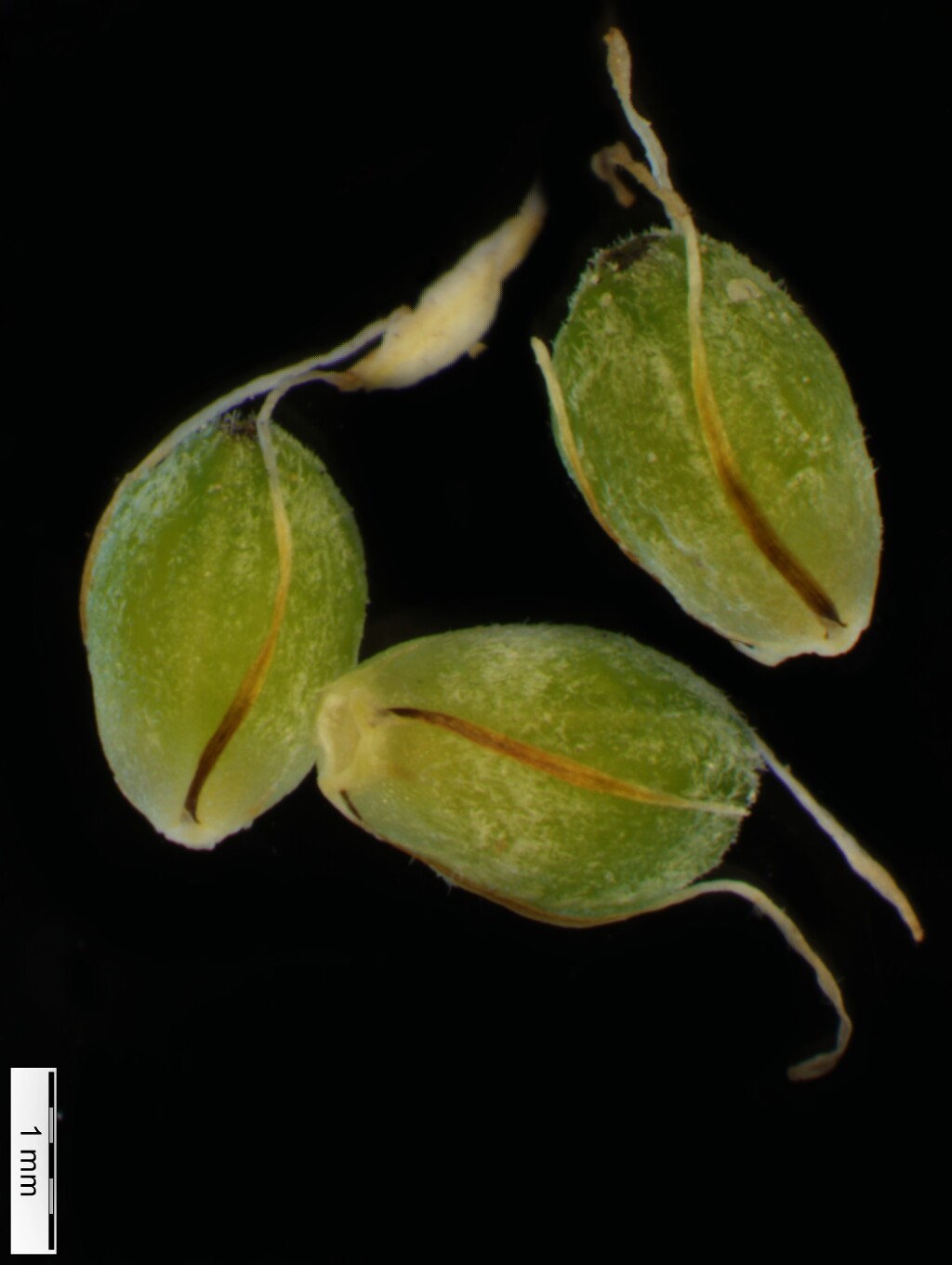Tricostularia pauciflora
(F.Muell.) Benth. Needle Bog-rushSmall tufted perennial. Culms 1-noded or nodeless, terete, glabrous, 10–45 cm high, 0.5–1.2 mm diam. Leaf-blades often much reduced, to 6 cm long; sheaths straw-coloured to dark red-brown, dull. Spikelets solitary or 2 or 3 in a terminal cluster (rarely with a second distant cluster), terete, 4–6 mm long, each spikelet with an uppermost bisexual flower and lower 1 or 2 male, sterile or bisexual; involucral bract somewhat shorter than inflorescence. Glumes subdistichous, long-acute to acute, keeled especially near apex, glabrous except for occasional hairs on keel, very pale red-brown to very dark red-brown (apex often darker than body); fertile glumes 3.5–4.0 mm long; hypogynous scales whitish, minute. Nut obscurely trigonous, obovoid to obpyriform, puberulous especially near apex, dull, mid-brown to dark brown, 2.2–2.5 mm long, 1.2–1.5 mm diam. Flowers spring–summer.
MuM, Wim, GleP, VVP, GipP, OtP, CVU, GGr, DunT, EGL, EGU, WPro, OtR, Strz. Also SA, NSW, Tas. Occurs chiefly on damp sandy heathlands of western Victoria (e.g. Grampians, Casterton, Anglesea) where locally not uncommon, uncommon east of Port Phillip Bay.
Wilson, K.L. (1994). Cyperaceae. In: Walsh, N.G.; Entwisle, T.J., Flora of Victoria Vol. 2, Ferns and Allied Plants, Conifers and Monocotyledons, pp. 238–356. Inkata Press, Melbourne.
 Spinning
Spinning


